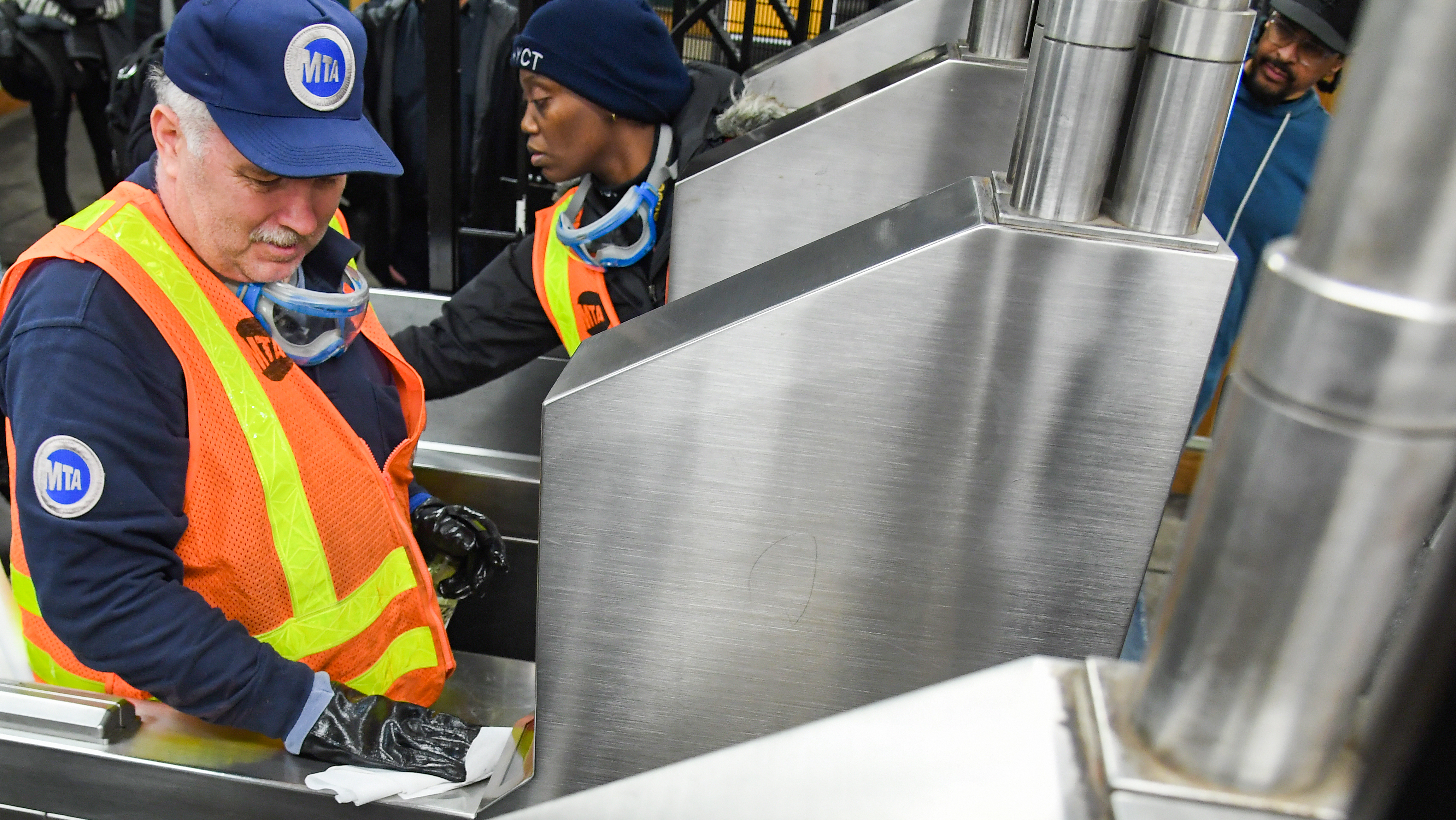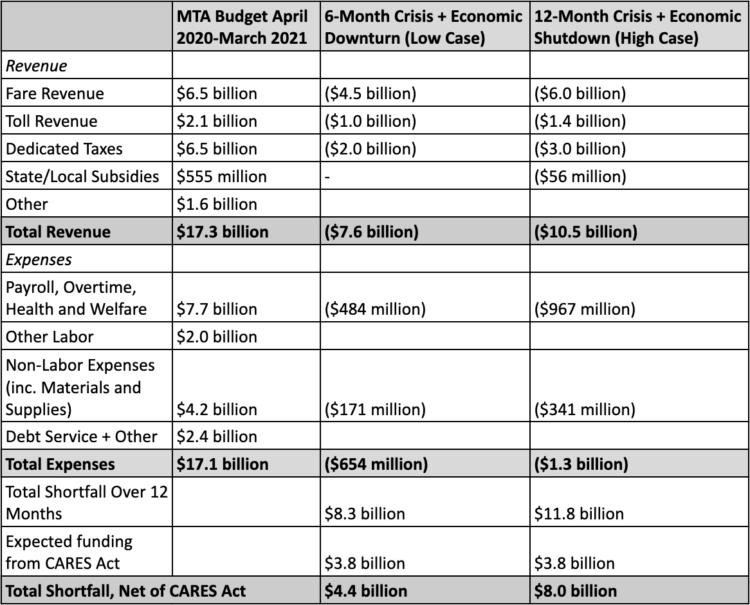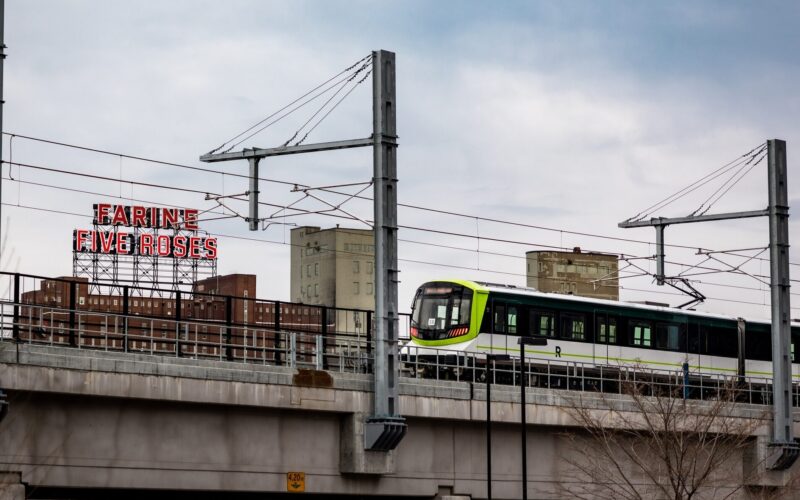
Photo: Marc A. Hermann / MTA New York City Transit
Ensuring the continued reliable operation of MTA trains and buses is absolutely essential to the COVID-19 disaster response in the New York region, as well as the economic recovery. Financial rescue measures enacted so far have provided critical resources that kept the lights on, but they amount to triage and will not last long.
Among all American cities, New York is uniquely reliant on its transit system. However, the March relief bill that included transit funding (known as the CARES Act) relied on formulas from federal transportation law that give New York short shrift. The MTA received 15% of transit funds despite carrying 38% of all transit trips in the nation.
Further compounding the problem relative to other locations, the MTA is especially reliant on fare and toll revenue, which has plunged more than any other source of funds. Because New York’s system is so large, and the region is the epicenter of the outbreak in the U.S., the MTA’s need for protective measures and overtime labor is especially great, and the reduction in dedicated tax and toll revenue that supports transit is especially intense.
We estimate that over the next 12 months, the MTA faces an operating shortfall (due to losses in fare, toll, and dedicated tax revenue, and increased costs related to COVID-19) of $8.3-$11.8 billion. This means that, after stimulus funding from the CARES Act is taken into account, the MTA faces a shortfall of at least $4.4-$8.0 billion.
This range is meant to capture two scenarios: At the low end, we envision a 6-month crisis where revenue from fares, tolls, and transportation-related taxes precipitously declines, dedicated taxes dip due to a severe downturn, and MTA expenses increase due to higher overtime, benefits, and materials spending. Our high-end estimate envisions a prolonged 12-month period of social distancing and economic shutdown, resulting in steeper declines in these funding sources and additional pressure on city and state sources of funding:

We calculate these scenarios using methods similar to our earlier analysis of national transit financial shortfalls, estimating shortfalls in MTA budget line-item categories. (Click here to read a more complete explanation of the methodology and assumptions used in this analysis.)
MTA agencies are currently experiencing precipitous drops in fare and toll revenue – with declines of 92-98% in fare revenue and 65% in toll revenue. Furthermore, the MTA’s dedicated funding streams include taxes and fees on payrolls, real estate transactions, petroleum, and for-hire vehicle trips — all activities that are sensitive to economic downturns or restrictions on travel.
The MTA is also shouldering enormous new costs to keep its services running as safely as possible — including cleaning, disinfecting, and procuring protective equipment. Because the virus has sidelined a huge share of the MTA workforce, the remaining crews keeping buses and trains running for essential workers must take on longer shifts, and overtime costs are rising.
Our analysis examines the MTA operating budget, and does not include what will surely be substantial impacts to the agency’s funding plan for its capital program. Both the operating and capital budgets must be made whole to ensure that New York can weather this disaster and fully recover once the immediate threat of COVID-19 recedes.
 On the Brink: Will WMATA’s Progress Be Erased by 2024?
On the Brink: Will WMATA’s Progress Be Erased by 2024?
The experience of being a WMATA rider has substantially improved over the last 18 months, thanks to changes the agency has made like adding off-peak service and simplifying fares. Things are about to get even better with the launch of all-door boarding later this fall, overnight bus service on some lines starting in December, and an ambitious plan to redesign the Metrobus network. But all of this could go away by July 1, 2024.
Read More On Track for Success: Decoding Montreal’s REM Model for Efficient Transit Projects in the U.S
On Track for Success: Decoding Montreal’s REM Model for Efficient Transit Projects in the U.S
Why is it so difficult to build subway and light rail projects in America? Every week there’s a new story about an American transit project that is behind schedule, over budget, or “paused”. Montreal’s Réseau express métropolitain (REM) stands out as a recent North American project that has begun to address some of the challenges that have foiled so many others. What is REM getting right that other projects aren’t?
Read More